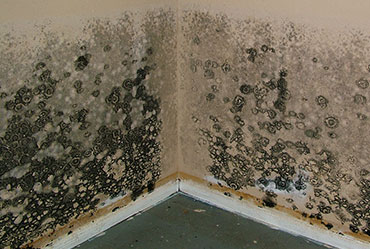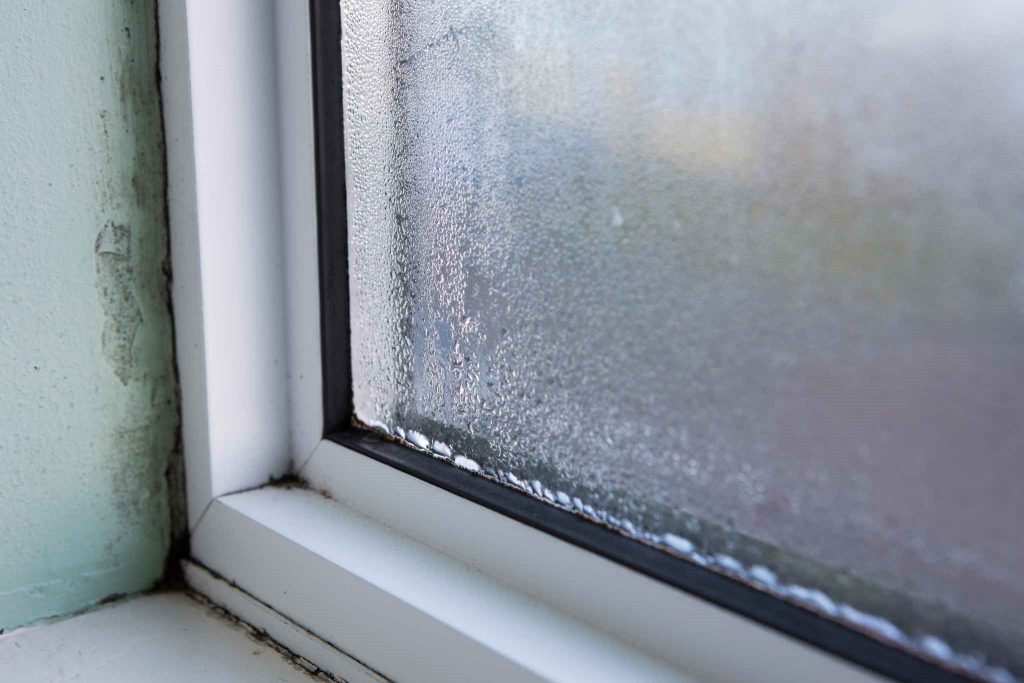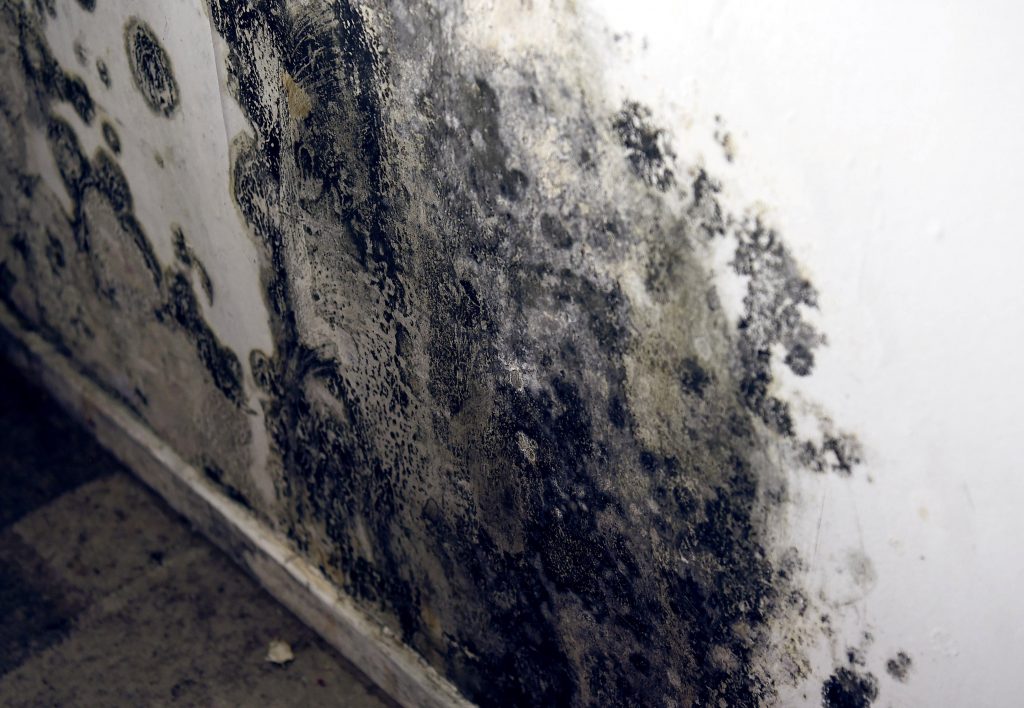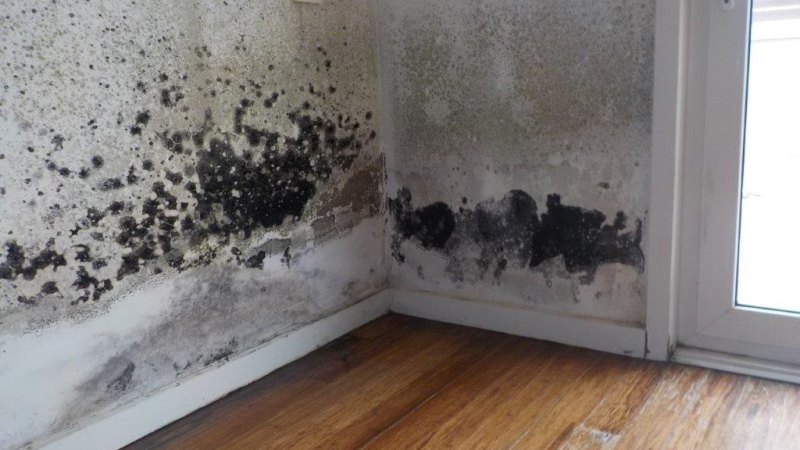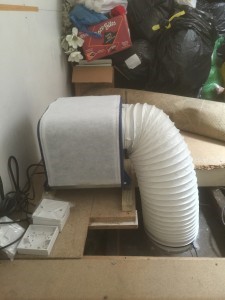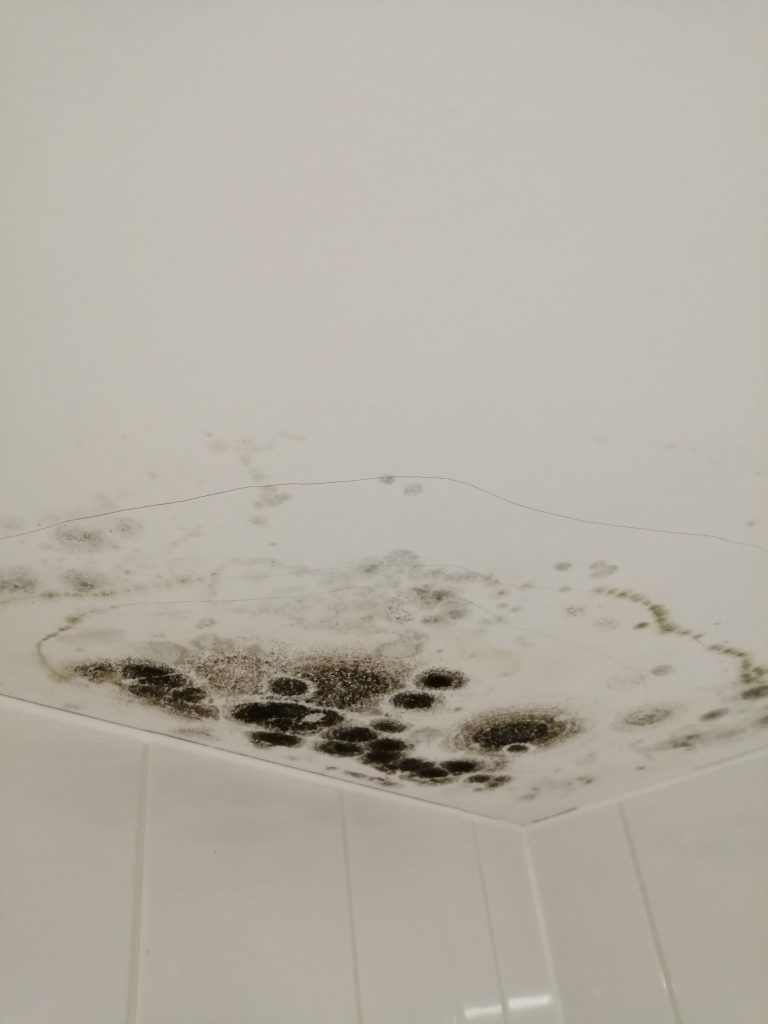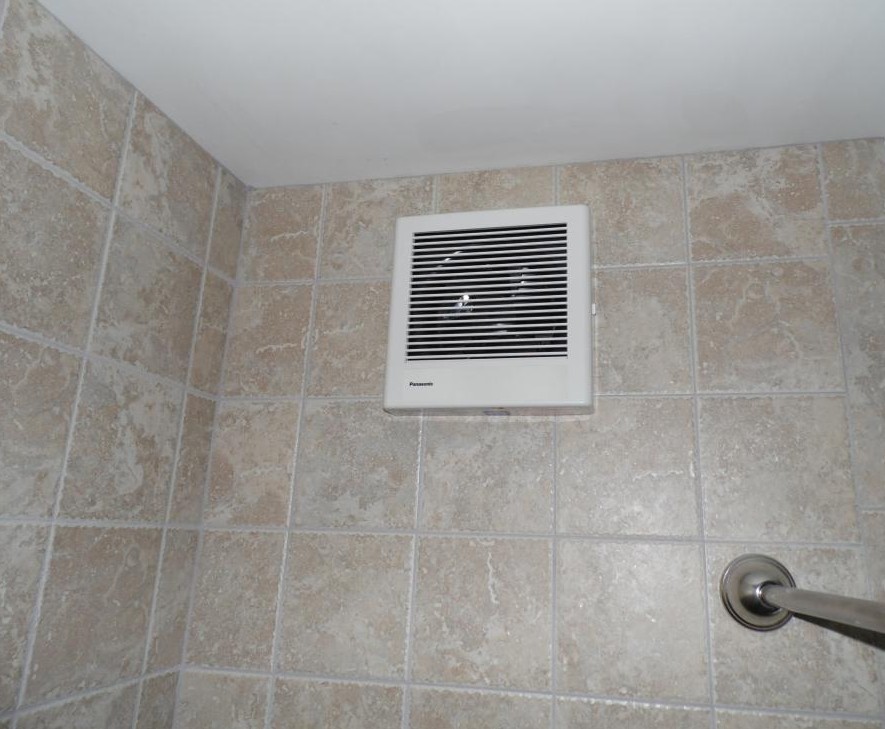Known to be the most common cause of damp problems in the UK, if condensation is allowed to build up, then over time you may begin to notice persistent damp stains, degradation of finish and potentially decay to timber elements in the property alongside the appearance of black mould. there are a variety of reasons condensation may be causing you damp problems, but generally speaking most condensation issues are caused by a lack of ventilation in the property. The air in buildings can have a high level of relative humidity due to the activity of the occupants (e.g. cooking, drying clothes, breathing etc.). When this water laden air comes into contact with cold surfaces such as windows and cold walls it can condense, causing water to be deposited. The point at which the water held in the air changes from vapour to liquid is known as the dew point.
Walls in kitchens and bathrooms (where atmospheric moisture levels are usually highest), solid external walls, un-insulated solid floors and cold bridges such as concrete lintels set in cavity walls are commonly the areas in which condensation takes place. Intermittent heating and cooling of the property can aggravate condensation problems, since it allows warm damp air to cool, reducing its capacity to hold water. Dew points are reduced allowing condensation to occur. When the air is reheated water is taken back into the air only to be deposited again when the air temperature drops again.
Condensation is often associated with poor heating and ventilation in buildings. It is more apparent in winter, as the external air temperature is low and external walls and windows are cold. The usual sequence of events is as follows:
- Cold air enters the building
- The air is warmed for the comfort of the occupants
- The warm air takes up moisture
- The warm, moist air comes into contact with cold surfaces, walls, windows, etc. and is cooled below its Dew Point
- Condensation occurs as the excess moisture is released
Interstitial condensation
Interstitial condensation occurs when the Dew Point is reached, not on the surface of a wall but within the structure of the building itself. This is known as interstitial condensation This happens when warm, moist air diffuses into a vapour-permeable material, such as fibrous insulation. If this material is warm on one side and cold on the other, the moisture will be deposited in liquid form within the material. This is a particular problem in heavily insulated or air-conditioned homes. Underneath suspended timber floors are at a great increase of fungal decay, this can cause a much more serious structural problems in years to come.
